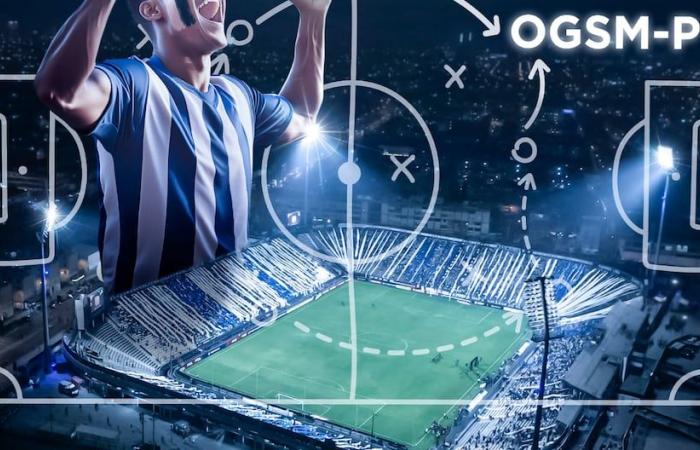Like many companies in the country, the blue and white club It was created based on passion and enthusiasm. But, by 2012, with finances in default, the intimates were on the verge of financial bankruptcy. A diagnosis from those years summarizes the situation: the team had not managed to win a championship for a decade. Meanwhile, the cost of maintaining the first division represented 93% of income, and only the remaining 7% was allocated to trying to cover payments from the areas of administration, marketing, the youth reserve, coaches, etc. “There were years when complete preseasons were held outside the country where not only the athletes traveled, but also their families.”says sports historian Armando Leveau.
Sustainability was far from the goal. After starting a special bankruptcy process due to insolvency before Indecopi in 2012, a restructuring plan was established. But during the following years the club’s liabilities continued to increase: by 25% in 2014 and 16% in 2015, reaching S/ 76.6 million in 2016.
Of course, it was not the only club hit by the situation. In Peru, four more entered bankruptcy proceedings. “In Spain some also went bankrupt. The reason, in part, is that there are many fans who manage the institution with the objective of winning at the expense of the financial order. He spends more than what is perceived, because he does it with the expectation of winning and taking the prize, which can amount to a few million soles. But when the ball doesn’t go in, problems come.”comments sports manager Renato Ricci.
With a problem of internal mistrust related to poor financial management and zero sporting results, the credibility and good image of the victorian club they were worn out. However, for 2017 Lima Alliance He already showed a better appearance: he had managed to return the net profit figures to the representative blue color, and that same year he was crowned champion of the closing tournament, after 11 years of absence from the podium. How did you put the bad streak behind you?
READ ALSO: Slow burn: how did the sale to Intercorp affect Bembos?
Every business has its particularities, and football was no exception. The administrations of Susana Cuba and Christian Bustos (between 2012 and 2016) faced some of these situations; For example, the contracts agreed with players for two or three years could not be easily undone, among some of the reasons, because they had the support of the union. “So the room for maneuver was more limited.”explains Ricci.
At the end of 2016, Renzo Ratto, an executive with experience in managing retail companies, but without knowledge of the challenges of sports administration, was appointed general manager of Alianza Lima. The first decision upon arriving at the club, according to what he says, was to generate a virtuous circle that would start with a good image, because that would allow, in turn, to strengthen the loyalty of his followers, receive more sponsors, increase income, improve the sports team. and obtain first places in the championships. To achieve this, it was essential to regain the trust of the stakeholders. Achieving that goal took a year, he details.
“The first meetings were difficult because my skills and knowledge were questioned”, he describes. “But the following actions helped to gain trust”. These actions included, for example, constant reporting to the Sunat and the implementation of a business model that was applied at that time by the giant Procter & Gamble.
The work plan was five years, under the guidelines of the OGSM-P methodology (objective-goals-strategies and measures-plans) —created in the 1950s in Japan—, with the mission of “increase income, reduce expenses and meet payments”. “The task was to generate a value proposition so that the club’s client perceives a difference in management and administration, so that they feel comfortable with the service and product received.”Ratto reviews.
The most important thing, after the objectives, was to establish internal goals. For the Finance area, it was defined that it had to comply with all debt obligations, especially the installments of the bankruptcy process, and with the payrolls of all workers, including the players. In the Legal area, it was proposed to present all the demands for acquisitive prescription (PA) of the esplanade, as well as recover the northern court and achieve the extension of the Santa María property. In the Commercial area, the mission was to increase the number of sponsors in uniform by two and have another three for activations, in addition to increasing total income by 20% each year. And the sports area had to concentrate on regularly being among the top three places in the different championships and ensuring that at least five members of the first division also participated in the national team, among others (see table).
Prepared by: Daniel Zavala
“All the goals were difficult to meet because there was resistance to change on the part of the stakeholders; However, everything was achieved. We periodically reviewed the progress”says Ratto. Was there something beyond a methodology? Yes. It highlights that the team resorted to the advice of leaders in their field. The Advisory Sports Committee was formed (with Teófilo Cubillas and Jaime Duarte, for example), the Minor Sports Committee, another legal committee and, in addition, an infrastructure committee.
“I am an alliance member, but in sports, as in any business, professionals are needed. Passion cannot cloud reason“, emphasizes the executive.
For Ricci, this sequence of actions influenced, in part, the sporting results of Alianza Lima. “It definitely doesn’t have to do with it 100%, but it does have something to do with it. The ball never enters by chance. “If you do things well, everything will come in due time, although sometimes the fan wants results in less time.”he says. For Leveau, the advisory committees helped define the profile of the player required on the court. “The team is made by the players; without them there is nothing. If they hire big-name players who don’t show anything on the field, it might affect the box office in the stadiums.”.
READ ALSO: Gastón Acurio and the internationalization recipe after the La Mar case, what happened?
In December 2017, Alianza Lima lifted the closing tournament cup after beating Comerciantes Unidos 2-0. That year, and until 2019, the club’s income was diversified and increased by more than S/ 25 million in addition to what it already received, which helped pay 13 installments of the bankruptcy debt. Liabilities fell from S/ 76 million to S/ 58 million in that period.
Seven sponsors appeared on the institution’s t-shirt, including a bank. “Contracts with old sponsors were renegotiated and a minimum improvement of 10% was achieved.” Eight new products were added to the merchandising channel. The number of fans coming to the stadium went from 186,000 to almost 270,000 by 2018. And 30% of the players had come from the minor divisions. A no small move was the transfer of Kluiverth Aguilar to the team of the City Football Group (CFG) conglomerate, Ratto recalls, adding: “The most important thing in institutions is not strategies or technologies, it is people. By having clear and transparent communication, you can achieve big, aggressive goals.”.
Between 2019 and 2024, Alianza Lima has had three general managers, the box office profit exceeds S/ 25 million per year and it continues to diversify its sources of income — which also includes seeking sponsors for the women’s soccer club—, although in sports the results have been mixed. In 2023 it was announced that they would approach mining companies. This month they play again in their emblematic Matute, whose 50th anniversary is approaching and its expansion is still looming for 2029. Ratto, now away from the intimate club, concludes with two lessons that his management left him: “Efficiency is not enough, attractiveness and unity must be built to be in balance (the administrative and sporting parts)”and that professionalization in a company is key. “Let’s always look for the best management model”, recommends. In retrospect, he analyzes that, perhaps, Juan Antonio Pérez López’s model, the octagon, could have given him an analysis of the institution in less time than it took him. But those decisions will be made by future administrations.
Start standing out in the business world by receiving the most exclusive news of the day in your inbox Here. If you don’t have an account yet, Sign up free and be part of our community.







